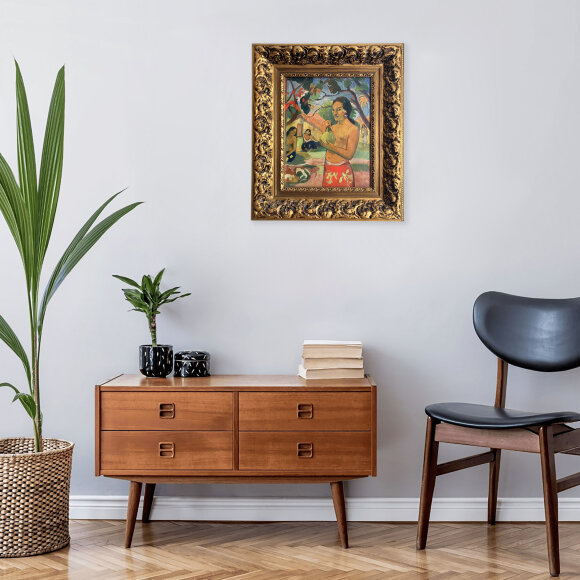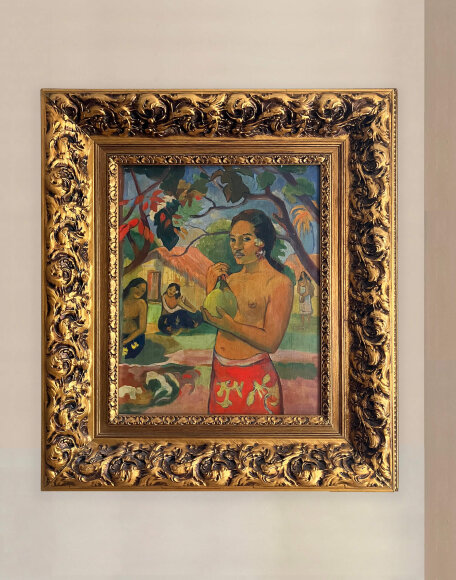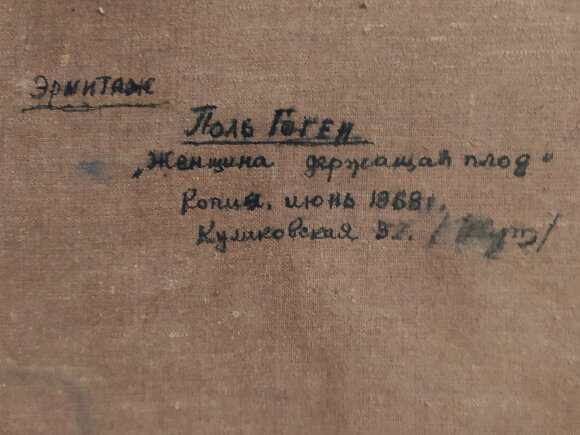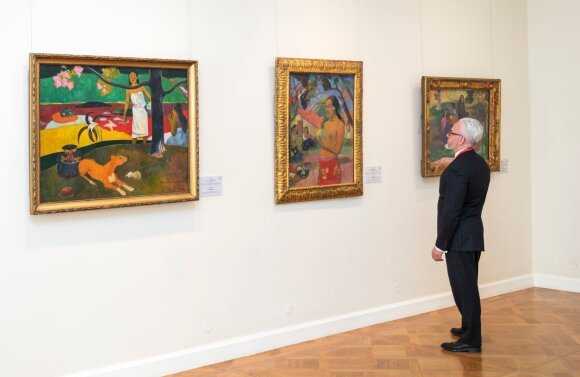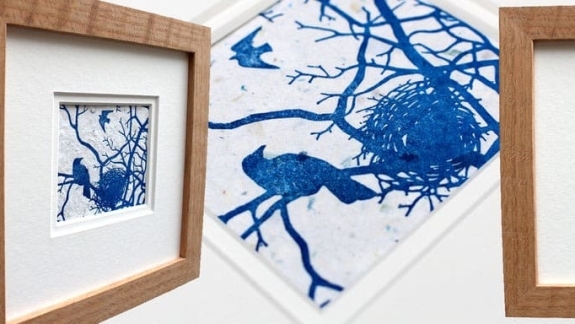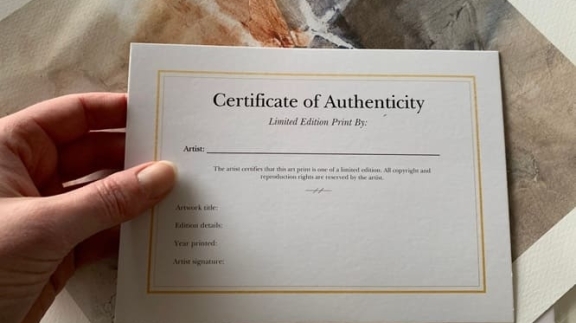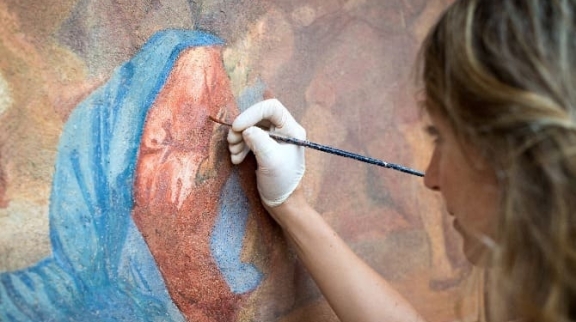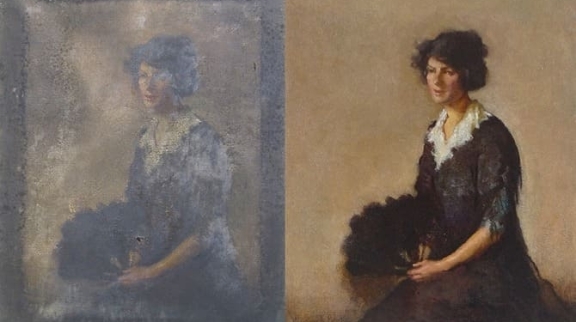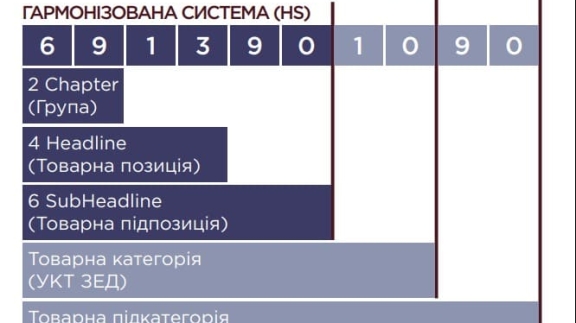- Overview
- Characteristics

One of Paul Gauguin's most recognizable paintings, "Woman Holding a Fruit," also known by its Maori title "Eu haere ia oe?" ("Where Are You Going?"), was painted in 1893 during his first stay in Tahiti, the jewel of French Polynesia.
Paul Gauguin (1848-1903) closely tied his art to the distant island of Tahiti. He found his ideal of beauty in the image of young Tahitian women with broad shoulders, strong torsos, and distinctive facial features, including plump lips, wide nostrils, and striking almond-shaped eyes. To convey this unique world, where humans and nature live in harmony, Gauguin departed from many traditions of European painting. He abandoned aerial perspective and chiaroscuro modeling, instead emphasizing decorative qualities and monumentalism in his artistic style.
The self-taught French artist's work was revolutionary for its time. For the first time, instead of the classical antique ideal, the European public was presented with "barbaric" imagery. The cultures of uncivilized peoples, long considered wild and primitive, suddenly became fascinating to a wider audience.
Following Gauguin, artists began to experiment with this exotic style, which later evolved into a distinct art movement: Neo-Primitivism. However, it wasn't just the new subject matter but also its unconventional execution that astonished contemporaries: red skies, green water, blue trees.
In Gauguin's works, observations of the real life and customs of Oceanic peoples gradually intertwined with local myths. The Tahitian woman holding a mango fruit is rendered in beautiful, sophisticated golden-brown tones. Perhaps Gauguin's first Tahitian wife, Tehura, served as the model. The landscape, like the figure, is treated very generally in the painting. Swaths of gold, red, pink, and green make the canvas resemble a decorative, colorful tapestry.
The original painting was acquired by the renowned Russian merchant and patron Ivan Abramovich Morozov (1871-1921) and sent to Russia to complement his remarkable private collection. Until 1948, this canvas was part of his art collection, but from 1948 onwards, I.A. Morozov's collection was nationalized, and the painting has since been a permanent fixture in the collection of the State Hermitage Museum.

A second version of this painting is held in the collection of the **State Museum of Stuttgart**, though its composition differs slightly.
THE HISTORY OF THE PAINTING'S COPY
The State Museum of Stuttgart, possessing only the initial, less popular version of the painting "Woman Holding a Fruit," commissioned a copy of the State Hermitage Museum's later, more renowned version of the artwork.
Restoration artists at the State Hermitage Museum created a freehand copy of Paul Gauguin's painting. They replicated the original technique (oil on old canvas), the subject matter with good accuracy, and the same color palette. The presented copy measures 51 x 41 cm (approximately 20 x 16 inches), while the original is significantly larger at 92.5 x 73.5 cm (approximately 36.4 x 28.9 inches).
This is how the featured copy of "Woman Holding a Fruit" ("Woman with Fruit") came into existence. Historically, however, this particular painting spent most of its life in a private collection in Ukraine.
Artdom - Gallery of paintings (Ukraine, Kyiv, Hetmana Pavla Skoropadskoho St. 6). Featuring artworks by Ukrainian artists — paintings (oil, acrylic, etc.), graphics (watercolors, engravings, lithographs, drawings), sketches, and decorative and applied art objects (sculptures, figurines, statuettes). We offer only original, handcrafted pieces by talented artists, highly valued in the art market.
If you're looking for a painting to enhance your interior, add to your collection, or as a gift, please contact Artdom Art Gallery. Our collection features rare and valuable art pieces that will make an excellent addition to any collection, a thoughtful gift, or simply a beautiful decoration for your interior.
Artdom - Gallery of paintings - Original paintings from artists and collectors, collectible art pieces from professional artists.
| Автор | Гоген Поль |
| Период создания | 1968 |
| Размеры, см | 51*41 |
| Материал основы | Холст |
| Оформление | Есть |
| Сюжет | Портрет |
| Стиль | Импрессионизм |
| Техника создания | Масло |
Categories:Paintings★ Exclusive collection ★









